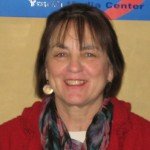Author’s Note:
I am so positive about the power of youth media and I wonder how we can make it bigger and available to more young people. I wanted to share our Chicago journey with the field so you can catch up with our work. Please feel free to use the study to raise funds in your locale!
Youth media organizations have both unique individual features and common goals. Some of the common goals are to amplify the voice of young people as well as to raise the importance of youth perspectives for understanding school, community, and social issues.
In 2006, youth media organizations were brought together by staff of the Robert R. McCormick Foundation to learn about the best practices of the non-profit field and to collaborate on projects. Out of these meetings, the Chicago Youth Voices Network (CYVN) was formed. Throughout the past ten years, a number of independent, non-profit youth media groups have met together to figure out how to accomplish more using a team effort.
From 2006 to 2013, CYVN organizations collaborated on a number of projects including: Youth@theCore, a project that gathered youth-created content and made it accessible to Chicago Public School teachers; Nuf Said, a reporting project that gathered data about youth and shared it on a website; and, a project where young people created content while visiting the Holocaust Memorial Museum’s “The State of Deception: The Power of Nazi Propaganda.” .
In 2013 the McCormick Foundation commissioned a study, “Life After Youth Media: Insights about Program Influence into Adulthood.” The study explored youth media’s influence into adulthood with questions like: Do the skills, attitudes, and behaviors imparted in youth programs “stick” into adulthood? Does program intensity matter? How do youth media participants’ outcomes differ from the outcomes of youth who are involved in other programs?
One of the outstanding findings from the study was youth media alumni feel better equipped to understand issues, and they participate in elections at a higher rate than their peers. To promote and celebrate the results of this study, CYVN members worked together to present the key findings at a formal breakfast. Invitations to the event were sent to lead persons and influentials in the fields of education, journalism, media, as well as funders. The breakfast program was hosted by local news anchors; the program included a slideshow of infographics from the study and youth speaking about their involvement in youth media programs and how this involvement positively impacted their lives. Before leaving the event, each attendee was asked to fill out a 3 x 5 card to comment on how they would support youth media in the future. This event not only publicly announced the study and promoted the work of our organizations, it also brought CYVN members together as an effective team.
Today, in 2017, CYVN core membership consists of nine youth media organizations working in different schools and neighborhoods, representing a variety of youth media subjects and approaches. One is oriented to teach spoken word, one teaches youth radio, three teach writing and digital media, three train youth in digital media production, and one organization is focused on civic engagement. This diversity and range brings strength to the collective organization.
In the spring of 2016, two experienced strategic planning consultants led CYVN members through a process resulting in the CYVN Strategic Plan 2016-17. Goals identified in this process included:
1) Build our capacity to do our envisioned work by increasing the membership base and re-energizing commitment to investing in the Network.
2) Use CYVN to support and showcase our individual organizations while we promote our shared goals. This will include strengthening each organization and creating ways to share knowledge and formal professional development. Part of this work entails the creation of a new website and hiring a social media consultant, steps that will make our work more visible and support our goal of amplifying youth voice.
3) Learn and share best practices in media literacy, pedagogy, and non-profit organizational development. This agenda item includes professional development sessions and formal presentations.
4) Build relationships and collaborate on projects that promote and disseminate youth voice. Do things together that we can’t do alone. Create a public event that promotes and celebrates youth voice. This will keep the public and influencers aware of our importance to young people’s futures.
We kicked off the plan in the fall of 2016 and look forward to some awesome accomplishments that will upgrade the field and build more opportunities for Chicago youth. We aim to generate funding support, greater public awareness, and increased inclusion in schools with media as a vital subject. We are most interested in finding out about other youth media collectives’ endeavors and directions. Sharing and discussing our on-the-ground trials and outcomes will be the stuff that fosters and builds the field of youth media.
About the Author
Denise Zaccardi is the founder and executive director of Community TV Network, a Chicago youth media arts education and production organization. She is a long time education and media arts activist.


